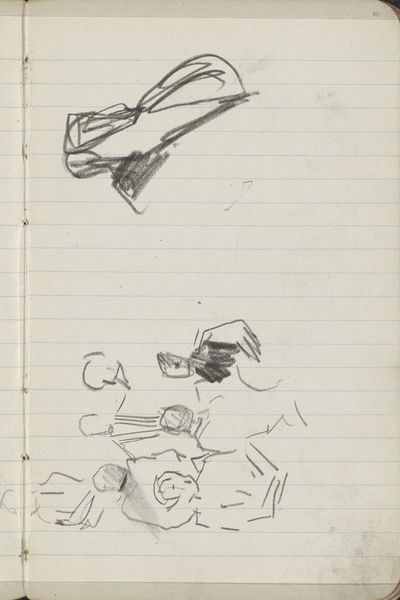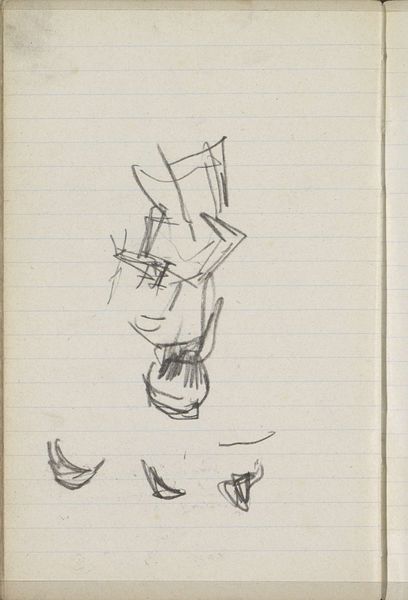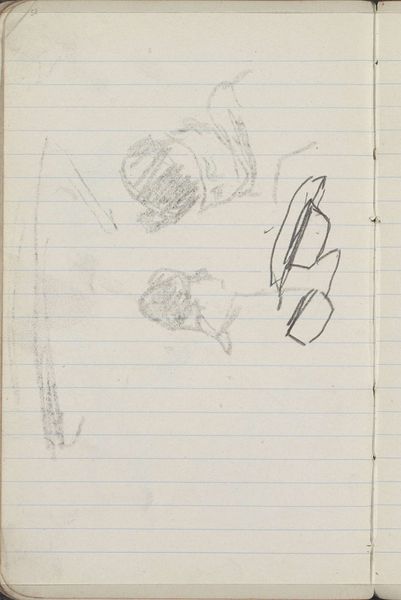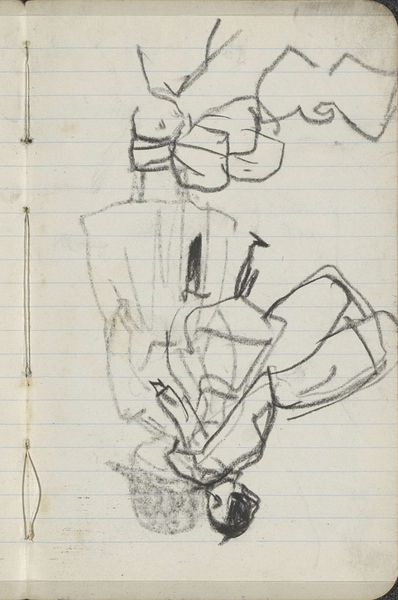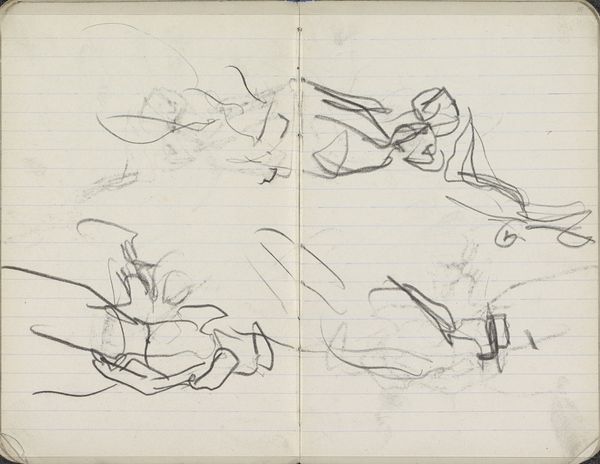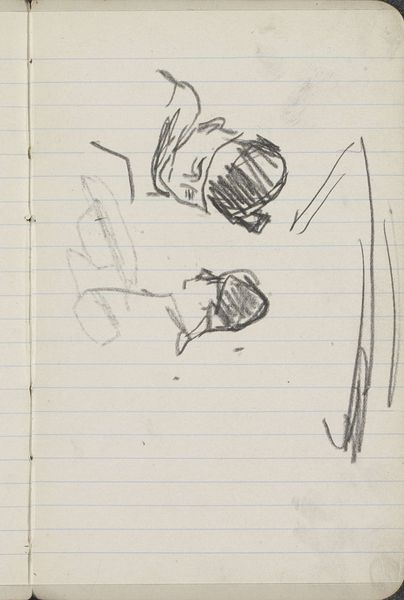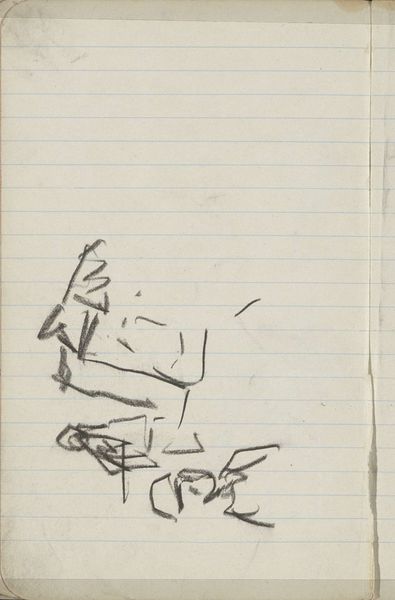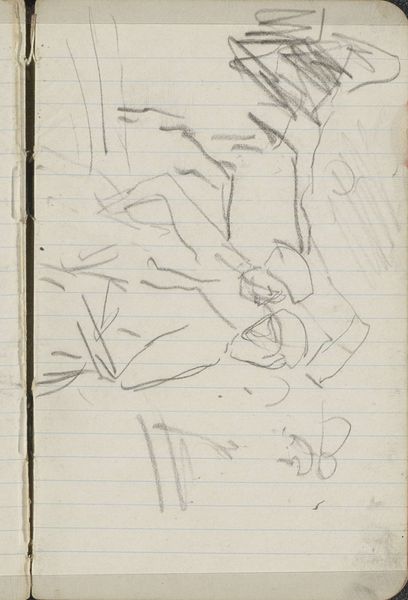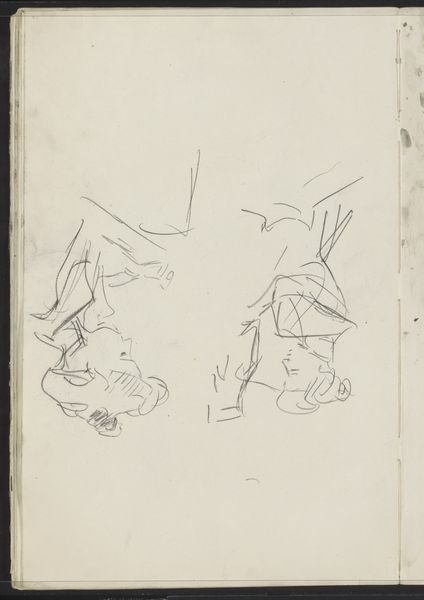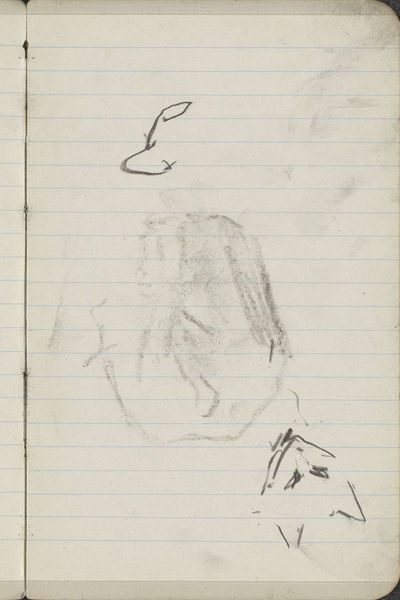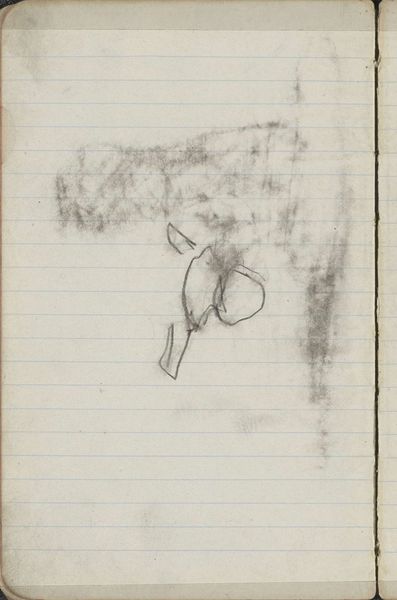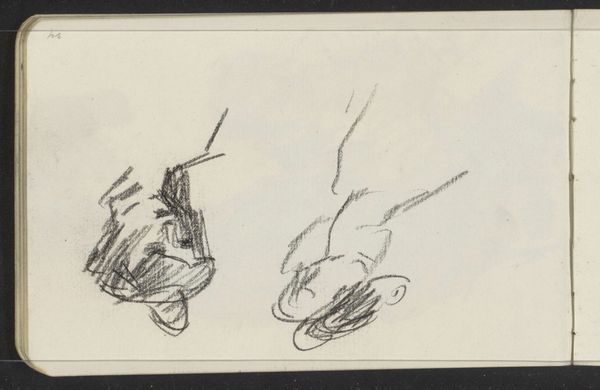
Copyright: Rijks Museum: Open Domain
Curator: Before us we have “Figuurstudies,” or "Figure Studies", a pencil and ink sketch on toned paper from 1893, created by George Hendrik Breitner. It’s currently held at the Rijksmuseum. Editor: Immediately, the intimacy strikes me. It’s just a glimpse, a suggestion. A ghost of forms sketched on lined paper, like looking at someone’s private thoughts made visible. Curator: Breitner was very interested in capturing everyday life in Amsterdam. It appears that these could be studies for figures he observed in his surroundings. The speed and transience of modern life, I think, were very fascinating to him. He’s also choosing to present these figures in a very modern way by obscuring them. It reminds me of impressionist work more generally. Editor: It is quite a break from earlier depictions of figures. One expects more deliberate lines in classical drawings. But in "Figuurstudies", there’s almost a sense of vulnerability. You see, these sketches reveal not just the subject, but the artist's process—a glimpse into his eye and hand. It speaks to me of observation, an intimate connection to the quickly passing, the overlooked parts of modern life. Do the groupings suggest social commentary, like casual observations on class, or more abstract themes like individual identity? Curator: Yes, I completely agree that these studies offer us an opportunity to speculate. It seems a far cry from his more finished works with the carefully documented cityscapes of Amsterdam for which he’s better known. Instead, it feels like preparatory, and even fleeting… not intended for viewing, really, yet holding potential in that it informs his future work. Breitner might have seen this only as a visual memorandum, but these rapid sketches convey volumes, capturing both the visible world and the internal one. Editor: Absolutely. The immediacy makes me consider the lineage of the quick sketch throughout art history as it morphed with modern consciousness: What did Da Vinci do? Michelangelo? How have those symbolic choices around line evolved? How does this work inform modern sketching trends today? It opens many interesting avenues for us to explore. Curator: Indeed. A casual drawing, really, from the hand of a man who sought to capture modern life with immediacy. Editor: Which only highlights the rich history woven into a simple form, doesn't it? A window into not only an artist's mind, but to a historical, visual dialogue, ongoing.
Comments
No comments
Be the first to comment and join the conversation on the ultimate creative platform.

